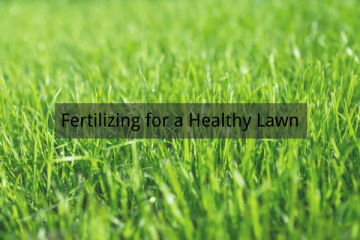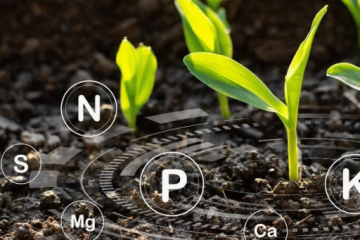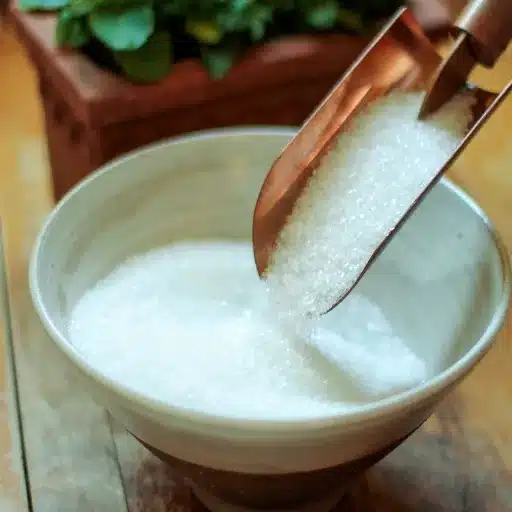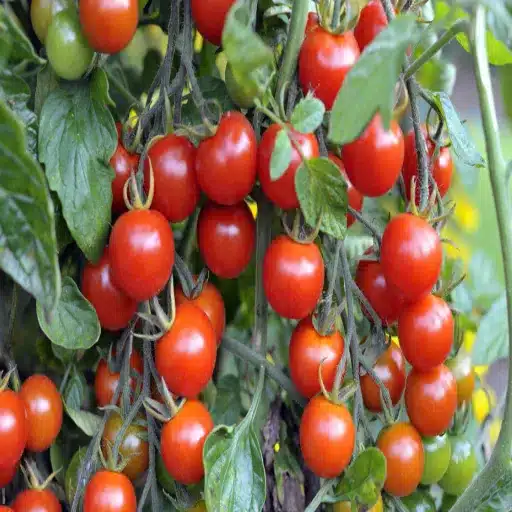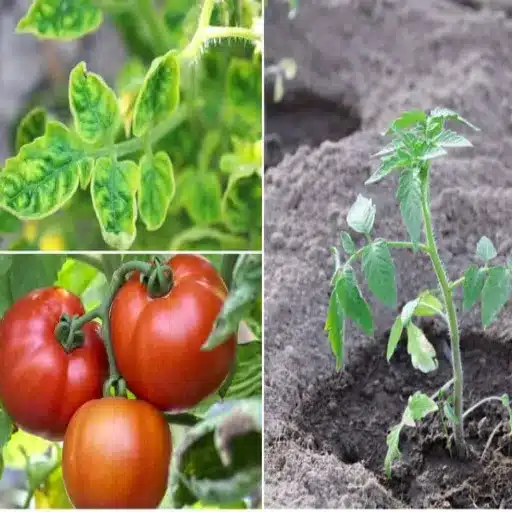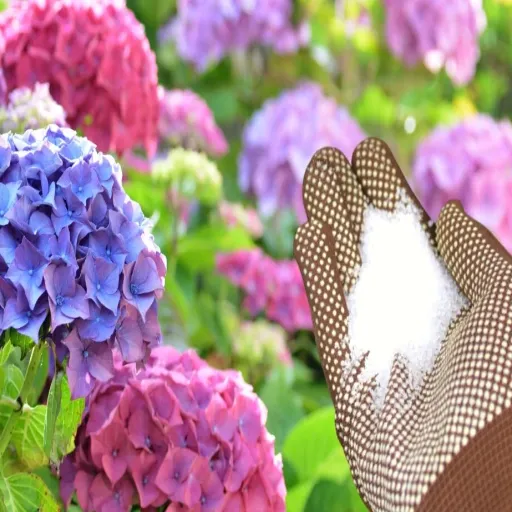Epsom salt has long been celebrated as a versatile and natural solution for enhancing plant health and growth. Whether you’re an experienced gardener or just starting to nurture your first green shoots, understanding how to use Epsom salt effectively can make a significant difference in your garden’s success. This guide will walk you through everything you need to know about using Epsom salt for plants—from the science behind its benefits to the precise methods for dilution and application. If you’re looking to revitalize your garden, boost plant yields, or simply unlock the hidden potential of this time-tested gardening hack, you’re in the right place.
How to Use Epsom Salt in the Garden Properly?

Dilution Rates: How Much Epsom Salt Per Gallon of Water
To achieve effective results, the dosage of Epsom salt varies with the kind of plant being treated and its individual nutrient needs. A general recommendation is to use between 1 to 2 tablespoons of Epsom salt per gallon of water for most garden plants. This ratio avoids adding too much magnesium and sulfur, which are the main nutrients of Epsom salt, while still allowing these plants to enjoy greater growth potential. It also prevents soil toxicity and unhealthy imbalance sils.
For seed starting and young plants, the dosage of 1 tablespoon per gallon is easier on magnesium and suffocates growth potential without stunting low growth. Concerning high-nutrient-need plants like tomatoes, their strong stems serve as a sturdy foundation and need constant fuel; hence, during their active period, they require 1.5 to 2 tablespoons per gallon over two to four-week intervals. It becomes critical to pre-mix the solution to prevent non-homogeneous refractive dispersing of nutrients.
Before using Epsom salt in the garden, conduct a soil test to determine the nutrient levels because too much magnesium inhibits calcium and potassium uptake. Having the soil tested provides concrete results, allowing you to optimize your dilution and application timing for maximum effectiveness. Following these steps allows you to safely and efficiently use Epsom salt to improve your garden’s health and yield.
Application Methods for Different Garden Plants
- Vegetables: Epsom salt could be beneficial for plants like tomatoes, peppers, and leafy greens because it helps them grow by boosting magnesium, which helps in photosynthesis and fruit development. To prepare the solution, dissolve one tablespoon of Epsom salt in a gallon of water, and use it as a foliar spray every two weeks. This method allows quicker absorption via the leaves, while also adding soil nutrients.
- Flowers: Plants that flower, especially roses, have high magnesium needs to enable them to bloom beautifully, and thus, they tend to benefit greatly from Epsom salt application. Mix one teaspoon of Epsom salt into water and soak the base of the flowering plant with it. For best results, repeat monthly while ensuring even distribution to avoid nutrient imbalance.
- Fruit Trees: The larger magnesium-rich fruit-bearing trees can have their yield enhanced through larger and sweeter fruits with the addition of magnesium. Use two tablespoons of Epsom salt per nine square feet of root zone area, then water it well to help the nutrients get into the soil. Do this three times during the growing season—in spring, midsummer, and after harvest—to increase the yield.
- Lawns and Turf: Chlorophyll production greatly aids in the color and health of grass, and Epsom salt applications can help. Just add two tablespoons of Epsom salt to a gallon of water and apply it with a garden sprayer. Apply the solution monthly to achieve proper coverage, and in turn, the lawn will look vibrant during the growing season.
- Container Plants: Potted plants have limited soil which leads to rapid growth and high demand for nutrients. To ensure maintained optimal magnesium levels, add a teaspoon of Epsom salt every month to the watering can soil to ensure healthy growth and vibrancy amid the restricted growing medium.
To enhance overall plant health and boost yields, precise nutrient supplementation is beneficial, especially when applying Epsom salts. Always keep an eye on the response of the plants, as applying excessive salts can cause over fertilization.
When and How Often to Add Epsom Salt to Soil
Applying Epsom salt to the soil at a specific time and frequency is determined by the growth stage of a plant and the nutrients it needs. For most plants, adding Epsom salt once a month into the soil helps to alleviate magnesium deficiency and aids in maintaining healthy growth. During the planting phase, a tablespoon of Epsom salt can be added to every square foot of the planting area, as it helps in providing a default supply of magnesium for the soil.
Established plants benefit from adding a magnesium boost for tomatoes, peppers, and roses. For these hardy crops, dissolving a to two tablespoons of Epsom salt into a gallon of water and drenching the base of the plant helps their growth during the active growing season. For more advanced magnesium-demanding crops, the solution should be added every 3-4 weeks. Works well with foliar sprays for plants that are already showing signs of deficiency, such as stunted growth or yellow foliage. In this instance, a ratio of 1 tablespoon to a gallon of water should be sprayed onto the foliage, making sure to minimize runoff.
Keeping tabs on the condition of plants and soil health is important. If Epsom salts are applied too frequently, they can increase the salts in soil to a level which can damage the plant’s root system and interfere with the nutrient uptake necessary for proper growth. Testing soil quality at least once per year is recommended to assess if there is magnesium present and alter your supplementation schedule accordingly.
Which Plants Benefit Most from Epsom Salt?
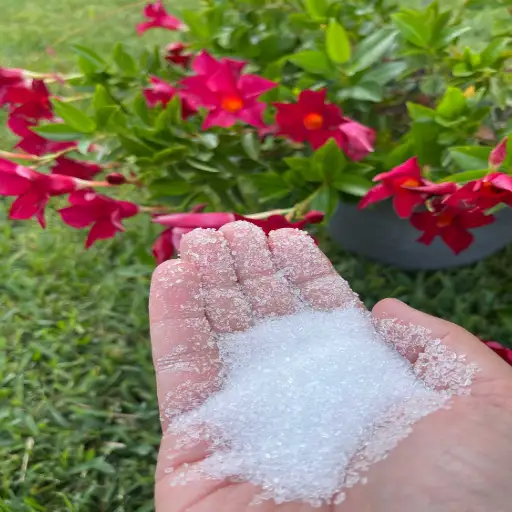
Tomatoes and Peppers: Preventing Blossom End Rot
The tomato and pepper crops are susceptible to blossom end rot, a physiological disorder that features a dark, recessed area at the base of the fruit. The developing fruit lacking calcium is the main reason for this problem, but irregular watering habits and uneven nutrient supply in the soil worsen the issue. Despite containing magnesium sulfate, Epsom salt does not treat a calcium deficiency. On the other hand, magnesium, which is an important secondary nutrient, does aid in the plant’s overall metabolism, therefore strengthening its ability to fight physiological disorders, such as blossom end rot.
Understanding Epsom salt’s role as an Mg supplement and its soil chemistry interactions is crucial to optimizing tomato and pepper crop yields. As with any crop, soil testing is important to make sure there is sufficient calcium before magnesium-based amendments are added. Too much magnesium can inhibit calcium absorption, which is a problem when there are already underlying calcium shortage issues. For best results, Epsom salt should be used with calcium-containing products like calcium nitrate or gypsum to avoid soil nutrient imbalance. Along with that, maintaining consistent watering schedules helps mitigate nutrient uptake fluctuations that often lead to blossom end rot.
According to research, magnesium deficiency during critical periods of high stress, such as fruit development, can be alleviated with the Epsom salt foliar spray technique. Using 1 tablespoon of Epsom salt per gallon of water facilitates direct nutrient absorption through the leaf tissue rather than soil retentive obstacles. Although issues like soil pH, calcium concentrations, and water irregularity, which primarily cause blossom end rot, should be treated instead of ignored. In properly managing the soil, complemented with precise nutrient dosing and irrigation, conditions for disease suppression are created alongside optimized fruit development in tomatoes and peppers.
Flowering Plants: Boosting Bloom and Color
Determining the plant’s nurture needs for nutrition and the environment is essential for maximum blooming and flowering. Phosphorus and potassium remain two core macronutrients that aid in shaping the amount and quality of flower production and color. Phosphorus aids energizing exercising to transfer systems in flower buds while potassium manages potassium water, primary enzymes, and plant strength.
In addition, flowering grows need specific lighting. Most types have flowering cycles of the growing process geographically divided into long day, short day phases, or neutral, depending on the plant. Growers for quality outcomes should enhance light strength along with the time of day, due to the requirements of the species. An additional extended use for light LED grow lights enables restraining excess light from reaching or controlling the spectrum amount in the room or area where light is scarce.
Consistent clean watering observing maintain routine practices clean and undiluted for care of functioning whole system is equally essential. Inhibits filled flower energy cause or overwatering So suffocating roots form and nutrients lose. Monitoring moisture levels combined enable powerful supporting fantastic region provide in change soil and on providing drain range system soils in achieves capable assurance healthy root wells.
Periodic applications of micronutrients like magnesium and iron improve pigmentation, leading to more vibrant flower colors. Magnesium contributes to the production of chlorophyll, and Iron affects the enzymatic activities that are important for sustaining deep green leaves, which serve as a stunning backdrop to vividly colored flowers. Meticulous management of nutrients, care, environmental controls, and consistent maintenance creates desirable conditions for flourishing colors and flowers in both ornamental gardens and commercial horticulture, blazing with richly colored flowers.
Vegetable Garden Plants That Like Epsom Treatments
Epsom salt, magnesium sulfate in its technical form, offers nutrients that can enhance the growth and yield of a variety of vegetable garden plants. The primary element, magnesium, is vital for photosynthesis since plants require chlorophyll, which is magnesium-based, and sulfur assists in forming amino acids and proteins.
Tomatoes provide an example of many vegetables that benefit from Epsom salt. They are usually magnesium deficient, which is evidenced by yellowing leaves or a low fruit crop, particularly when the soil contains little magnesium. With the aid of Epsom salt, tomatoes can sustainably use magnesium due to increased nutrient uptake. Foliar sprays or soil applications during the growing season tend to increase the nutrition of fruits. Other crops, such as peppers, are also responsive to treatments with Epsom salt due to increased growth and yield. Other leafy vegetables like spinach and kale can benefit from the increased magnesium since it aids in folate formation alongside enhanced chlorophyll levels.
The application rates should be precise for the best results. Most of them say that one tablespoon of Epsom’s salt in a gallon of water and monthly application by spraying helps ease usage for mulching. Yet, it is advised to perform soil testing to customize magnesium supplementation to the requirements of your garden, preventing the potential oversaturation that could disrupt the equilibrium of soil nutrients.
Signs Your Plants Need Epsom Salt
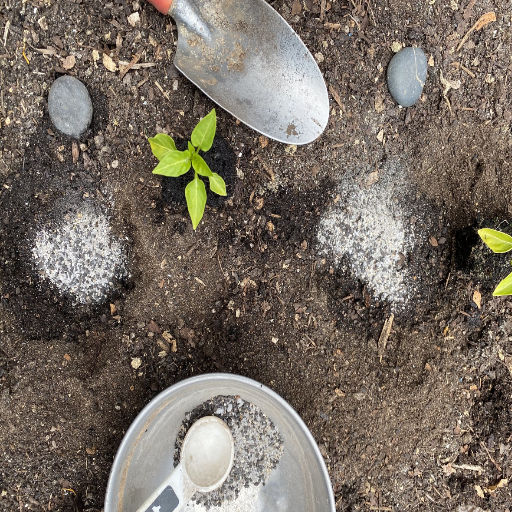
Recognizing Magnesium Deficiency in Plants
Magnesium deficiency is critical to diagnose lest it becomes a problem for plant growth and poses chlorosis, a condition where leaves begin to lose their green pigmentation, bringing forth several symptoms that are both physiological and visual. The loss of magnesium from the body results in parts of older leaves turning yellow. As magnesium aids in the creation of chlorophyll and photosynthesis, this results in the vertebrae moving away from the center of the leaf towards the edges and turning green while turning yellow. Magnesium’s role in the production of chlorophyll leads us to believe that magnesium over time may make leaves brittle and might result in necrotic edges to flourish off unsightly spots and fend off the limb prematurely.
Further, other than showing signs of losing control of limbs, plants tend to lose height magnesium deficiency. Spiral-shaped tips along with a paralyzed stem become observable markers of a plummeting metabolism alongside insufficient energy and potent nutrient transportation blackout, supposedly destined to worsen yield.
Along with tomatoes and rosas, pepper crops further showcase shortened sheaths and descending leaves at the tip, which showcase dual stem curling signs. To rule out possibilities of other fragrances like iron along with manganese posing as foils pall palladium, magnesium deficiency, a soil test is quintessential in diagnosing magnesium concentration levels and determining if estranged helps. Over-mentioning using magnesium sulfate either along with a promised shape or surface is suggested, although alongside altering soil nutrients, deployed increase in aid might lead to merciless slaughter of other essential nutrients harbored in the soil and otherwise maintained in harmony.
When to Use Epsom Salt vs. Other Nutrients (Nitrogen, Phosphorus, Potassium)
As magnesium sulfate, Epsom salt does its job as a supplement quite differently from the fundamental macronutrients in plant nutrition: nitrogen (N), phosphorus (P), and potassium (K). Returning to nitrogen, it has an equally important role in supporting lush green growth because of chlorophyll manufacturing, while phosphorus helps in the development of roots, flowers, and seeds. The role of potassium is to improve plant health and strength while allowing the plant to endure stress and manage water consumption. Epsom salt, on the other hand, is much more specific in its application, correcting deficiencies of magnesium and sulfur.
The most effective treatment with Epsom salt is when a magnesium deficiency manifests as interveinal chlorosis on older leaves or poor fruit bearing. On the other hand, yellowing leaves on younger growths indicate stunted foliage growth and mark the need for Nitrogen. The application of Phosphorus is most favorable when plants exhibit weak root support or slow maturity, while potassium is required to treat chlorosis at leaf tips and enhance resistance to diseases.
Applying these nutrients concurrently increases synergistic effectiveness, which must also be balanced to avoid antagonistic interactions. Take, for example, the case of excessive magnesium interfering with calcium and potassium absorption, leading to a new growth deficiency. Thus, before applying Epsom salt or any primary nutrient, baseline soil or tissue testing must be conducted so that all necessary deficiencies are covered without making other nutrients inaccessible.
Common Mistakes When Using Epsom Salt for Plants
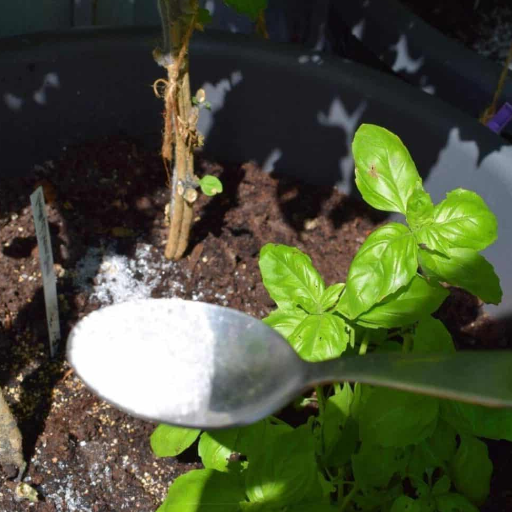
Overuse Problems and Effects on the Soil’s pH
An overabundance of Epsom salt with magnesium sulfate poses several negative outcomes on the soil structure, balance, and its ability to sustain plant life. Magnesium brought Epsom salt is known for its calcium ratio imbalance issues. Excess magnesium lowers calcium and potassium absorption. Calcuim and potassium are cellular, metabolically, and structureally important for the plant.
Aside from that, magnesium heavily strayed from its acidic or alkaline side may compete with other soil hydrogen cations causing a shift in pH alteration along the way. The long-term effects from this along with not periodically assessing the soil can lead to build up of salt which causes water absorption and soil quality to drop.
So as to deal with these it is important to not go beyond set guidelines for dosage, follow periodic professional soil pH monitoring, and frequently monitor magnesium concentration levels to keep build up increase of slack for salt in check. The Epsom approach guarantees the required extensions to nutrient access is done without negative consequences.
Why a Soil Test is Important Before Adding Epsom Salt
As with any soil treatment, conducting a soil test before using Epsom salt is crucial to maintain a healthy balance of nutrients in the soil. Epsom salt (magnesium sulfate) serves as an added source of magnesium and sulfur, two nutrients vital for the growth of many plant species. However, the geographic region, type of soil, and previous amendments tend to influence how readily these nutrients can be found in soil. A soil test helps in assessing the existing levels of magnesium and sulfur, enabling one to avoid over-application, which can cause nutrient imbalance, or worse, toxicity.
The broad scope of why soil tests should be carried out includes the efficiency regarding the pH metric. With regards to the pH, Epsom salt, being magnesium sulfate, has limited effectiveness in either very acidic or very alkaline soils. Additionally, conducting soil tests before the application of Epsom salt allows one to bypass unintentional effects on the ecosystems. Eutrophication poses a severe threat to water bodies as it causes excessive growth of vegetation, leading to the depletion of oxygen and harming aquatic life.
The latest development in technology such as spectral analysis and automated sampling enhances the accuracy and availability of soil testing. Employing this information to adjust nutrient management strategies increases crop production and improves soil health over time. Prescriptions for magnesium soil amendment foster sustainable agricultural practices while conserving resources and minimizing expenses, thereby enhancing economic efficiency. Soil testing, when executed in consideration of Epsom salt addition, provides a proactive strategy within comprehensive agronomic planning.
DIY Epsom Salt Solutions for Specific Gardening Problems
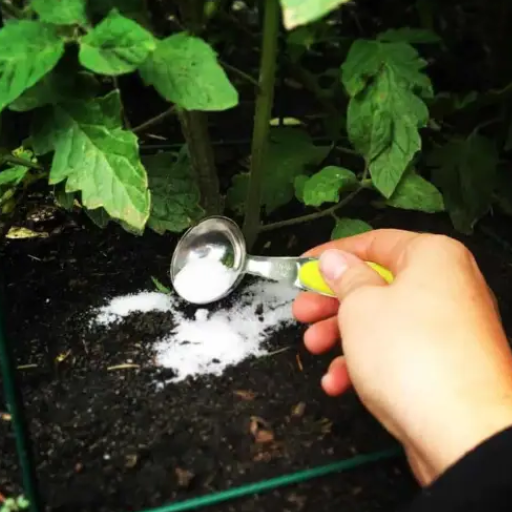
Epsom Salt Sprays for Foliage and Chlorophyll Production
Many plant farms have been using Epsom salt sprays to correct a magnesium and sulfur deficiency in plants which are important for chlorophyll synthesis and plant health. Magnesium enables chlorophyll molecules and allows the cell to utilize photosynthesis which is required to yield energy in the cell. While Sulfur helps in forming the proteins and enzymes essential for strong cell growth.
For a spray solution, Epsom salt should first be mixed with water in a ratio of 1 tablespoon for every one gallon of water. It is to be used in a fine mist spray, meant directly on the foliage so that maximum nutrient absorption from leaves can be achieved. This solution helps during magnesium deficiency or when yellowing leaves are noted, in addition to rapid growth periods. For best outcomes, the spray must be applied early in the morning or late in the evening when cloud cover is light to avoid evaporation and excess direct sunlight, which tends to burn the leaves.
New studies propose that foliar-applied magnesium sprays foliar applied have a higher efficacy than soil amendments for uptake in certain crops like tomatoes, peppers, and roses, which are considered to be high feeders. Consistent monitoring of plant tissue and soil nutrient levels is recommended to avoid any undue overapplication and maintain a proper nutrient diet. Use of Epsom salt solution sprays as a part of a nutrient amelioration strategy helps control gardening for the sustenance of long-term plant health and land productivity.
Solutions to Help Plants Grow Stronger and Healthier
Implementing optimal plant care helps support growth and build resilience against environmental stressors. Besides properly managing nutrients, consistent watering schedules are critical in preventing drought stress or waterlogging. Implementing crop-specific fertilization systems helps sustain important phases of growth, such as using NPK and its nitrogen, potassium, and phosphorus components.
Incorporating compost or older manure enhances organic matters and improves soil structure. For plants that are prone to a deficiency of chelated micronutrients, foliar feeding allows for direct nutrient uptake to address these shortages. Furthermore, employing a mulching technique around plant bases aids in suppressing weed competition alongside regulating soil temperature and moisture levels.
Pest control should focus on biological pest control, resistant plant varieties, and using chemical pesticides as a secondary option. Rotating crops consistently helps to address issues like nutrient depletion and mitigate pathogen buildup. When these practices are integrated seamlessly, plants could showcase improved productivity as well as overall health, regardless of the conditions or the soil type.
References
Frequently Asked Questions (FAQs)
Q: Is epsom salt good for all plants in your garden?
A: While epsom salt (MgSO4) can be beneficial for many plants, it’s not universally needed for all garden plants. Epsom salt is most effective when your soil is deficient in magnesium or sulfur, which are important nutrients for plant growth. Plants like peppers and tomatoes, roses, and some flowering plants often respond well to epsom salt applications. However, using epsom salt indiscriminately without knowing if your soil needs it may lead to nutrient imbalances. It’s best to perform a soil test first to determine if your garden soil requires these nutrients before applying epsom salt as a supplement to your regular fertilizer regimen.
Q: How do I properly dilute epsom salt for gardening with epsom salt?
A: For general use in gardening with epsom salt, dissolve 1-2 tablespoons of epsom salt in 1 gallon of water. This diluted solution is water soluble and can be applied as a foliar spray or used to water plants directly. For established plants, apply this solution once a month during the growing season. If targeting specific plants like peppers and tomatoes, add one tablespoon of epsom salt around the base of each plant and water thoroughly. For potted plants, use a weaker solution of 1 teaspoon per gallon of water. Always ensure the epsom salt is completely dissolved before application to prevent possible root burn or leaf scorch.
Q: When is the best time to apply epsom salt to peppers and tomatoes?
A: For peppers and tomatoes, timing your epsom salt application is key for maximum benefit. Apply the first dose at planting time to support early root development. Then make a second application when the plants start flowering, as this is when they have higher magnesium demands to encourage blooming and fruit production. A third application, when the fruit is developing, can help improve yield and flavor. Mix 1-2 tablespoons of epsom salt in a gallon of water and apply directly to the soil around the base of each plant, or use as a foliar spray every 4-6 weeks during the growing season. Remember that cool water is fine for dissolving the salt before application.
Q: Can epsom salt enhance seed germination and seedling growth?
A: Yes, epsom salt enhances seed germination for many plant varieties by providing magnesium and sulfur, which are crucial for chlorophyll production and enzyme activation. To use epsom salt for seeds, add 1 tablespoon to a gallon of water and lightly water seed rows before planting. For seedlings, a more diluted solution (1 teaspoon per gallon) can be applied once they develop their second set of true leaves. This naturally occurring mineral helps strengthen cell walls, making seedlings more robust. However, avoid overuse as it may leach other nutrients from the soil or affect the soil’s pH balance. For best results, apply the solution every two weeks to give seedlings an extra boost of these important nutrients.
Q: How can I tell if my garden soil is deficient in magnesium or sulfur?
A: The most reliable way to determine if your garden soil is deficient in magnesium or sulfur is to conduct a professional soil test, which many agricultural extension offices offer. Visual symptoms of magnesium deficiency include yellowing between leaf veins while veins remain green (interveinal chlorosis), particularly in older leaves. Plants may also appear less vigorous and produce smaller fruits. Sulfur deficiency shows as overall yellowing of younger leaves and stunted growth. Before assuming epsom salt will help, get your soil tested, as adding magnesium to soil that already has sufficient amounts can create imbalances with calcium in the soil and other nutrients. Remember that epsom salt is most beneficial when your soil test indicates a specific need for these elements.
Q: Can epsom salt help plants become greener and more lush?
A: Yes, epsom salt can help plants become greener and more lush, particularly in magnesium-deficient soils. Magnesium is a core component of chlorophyll, the compound that gives plants their green color and enables photosynthesis. When plants receive adequate magnesium through epsom salt applications, they often develop deeper green foliage and appear more vibrant. For a foliar application that enhances greenness, dissolve 2 tablespoons of epsom salt in 1 gallon of water and spray on leaves until they’re thoroughly moistened. Apply this solution every 2-4 weeks during the growing season. However, this works as a supplement to proper fertilizer practices, not a replacement, and is most effective when your soil is lacking in magnesium.
Q: Are there any plants that should NOT be treated with epsom salt?
A: Yes, not all plants benefit from epsom salt applications. Plants adapted to acidic soils with low pH, like blueberries, azaleas, and rhododendrons, typically don’t need additional magnesium and may suffer if epsom salt alters their carefully maintained soil chemistry. Mediterranean herbs such as sage, thyme, and rosemary prefer lean soil conditions and may become leggy with excess nutrients. Bean and legume plants can fix their nitrogen and generally don’t require additional magnesium unless your soil is severely deficient. Always check the specific needs of your plants before applying epsom salt. Additionally, avoid using epsom salt on plants in alkaline soils (high pH soils) where certain nutrients are already less available, unless your soil test specifically indicates a magnesium deficiency.
Q: How does epsom salt compare to regular fertilizer for garden plants?
A: Epsom salt is not a complete fertilizer but rather a supplement that provides two specific elements: magnesium and sulfur. Traditional fertilizers typically contain the primary macronutrients (NPK: nitrogen, phosphorus, and potassium) that plants need in larger quantities. While gardening with epsom salt can address specific deficiencies, it won’t provide the complete range of nutrients plants require for optimal growth. Think of epsom salt as a targeted treatment rather than a comprehensive plant food. For best results, use epsom salt alongside a complete fertilizer program, especially for heavy feeders like peppers and tomatoes. If you’re concerned about conventional fertilizers, there are organic options that provide a full spectrum of nutrients while maintaining soil health better than solely relying on epsom salt.
Q: Can too much epsom salt harm my plants?
A: Yes, excessive epsom salt application can harm your plants. Despite its benefits, overuse can cause leaf scorch, root damage, and soil imbalances. Too much magnesium can block the uptake of calcium in the soil, leading to deficiencies of this equally important nutrient. Over-application may also lower pH in already acidic soils, creating further nutrient availability issues. Signs of epsom salt overuse include leaf burn, wilting despite adequate water, and stunted growth. As a rule of thumb, never exceed the recommended application rates (typically 1-2 tablespoons per gallon of water applied monthly), and avoid frequent applications unless your soil test indicates a severe ongoing magnesium or sulfur deficiency. Remember that epsom salt is water soluble and can leach from soil during heavy rains, potentially affecting groundwater.

